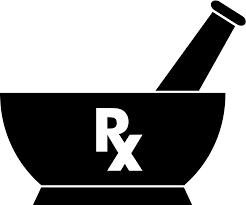|
Sometimes it is helpful to combine different treatments to achieve a better result, either at the same visit or subsequently. It stands to reason that when one has an injury more than one structure may be affected- muscles, fascia, ligaments, tendons etc. What is not as well known is that cutaneous nerves become sensitized and may perpetuate pain through the release of specific chemicals (such as CGRP). Different structures require different approaches.
We may have already treated myofascial pain with the pain neutralization technique (PNT) or trigger point injections but the patient may have some residual symptoms. We often combine perineural injections with prolotherapy or may combine prolotherapy with PRP. Sometimes we use acupuncture or acupressure to calm symptoms of anxiety or light-headedness if a person is apprehensive. PNT can substantially reduce the number of trigger point injections needed. One example: A lady was referred for acupuncture for treatment of longstanding shoulder and upper back pain which was interfering with her work. She was very keen to have this fixed but was so apprehensive about the needles that she broke out in a sweat (quite unnecessarily) before she could be examined. Instead of tackling the painful area directly she was initially asked to lie down on the exam table and four thin sterile acupuncture needles were gently inserted into peripheral points in her hands and feet which are known to have pain-modifying effects and which moderate the "fight and flight" response. After resting quietly for 20 minutes she was feeling much better (people often find acupuncture and acupressure quite relaxing or soporific). Then all but one of the tender points in her shoulder, arm and upper back were released with PNT using finger pressure only (no needles needed!). Only one resistant point on the side of her upper arm was still tender (what the Chinese would call an ah shi point); this was treated with an acupuncture needle briefly. When seen in follow-up she remained pain-free and able to work without discomfort. Another example: A lady was seen for chronic pain in her neck, shoulders, back, thigh and hip which had persisted following a motor vehicle collision. Her X-rays were normal; all her pain was "soft-tissue" but her function was limited. At the initial visit she was found to have very limited range of movement of her one shoulder with multiple tender points around the neck, shoulder and upper back. She also had limited movement of her lower back and one hip because of pain. PNT released her shoulder and neck pain the first visit and she regained full range of movement within a few minutes. On a few subsequent visits some recurrent tender points were released. PNT also released painful areas in her abdominal muscles which can cause referred pain to the back. Her back muscles and thigh needed trigger point injections and some of her hip pain responded to perineural injections. Obviously, these methods will not correct major structural abnormalities but because pain reduces function by inhibiting muscle movement, when the pain is relieved function is often restored. Pain Neutralization Technique (PNT) refers to a group of treatments developed by an acupuncturist/chiropractor in Denver, Dr Stephen Kaufman, for the treatment of a variety of painful conditions. They are simple, painless, effective and safe and do not involve medications or injections. No need for needles!
Most of the techniques can be explained through understanding how muscular trigger points can be swiftly released by specific pressure points and stretches. No painful deep tissue massage is involved. A few techniques are best understood according to Chinese Medicine concepts. After a standard examination of function and range of movement the therapist examines the muscles and soft tissues for tenderness. The most basic technique involves first identifying a tender trigger point and then applying specific stretches across the muscle or neighbouring muscles which instantly switch off the pain. The release is held for 20 seconds to make it "stick". One then proceeds to the next tender point. Not everybody responds to this treatment but when they do, the technique can be incorporated into the physical examination in such a way that when the exam is completed the pain is gone and function is restored. The presence of muscular pain limits movement because the body tries to protect itself by tensing up. Normal movement is usually restored once the pain is relieved. Most people require several visits to prevent it from recurring, especially if they have habitual postures or activities which perpetuate the muscular pain or re-injure the tissue, but occasionally one treatment is sufficient. Here are a few examples of the many people who find this helpful:
Clearly these techniques cannot cure serious diseases but myofascial pain often responds very quickly. We often start with PNT when treating muscular pain; if it is effective, then no other treatment may be needed. If not, then further testing and other options are available. |
AuthorDavid is a fan of books and no doubt will be sharing some good reads here. Archives
February 2024
Categories
All
|

 RSS Feed
RSS Feed